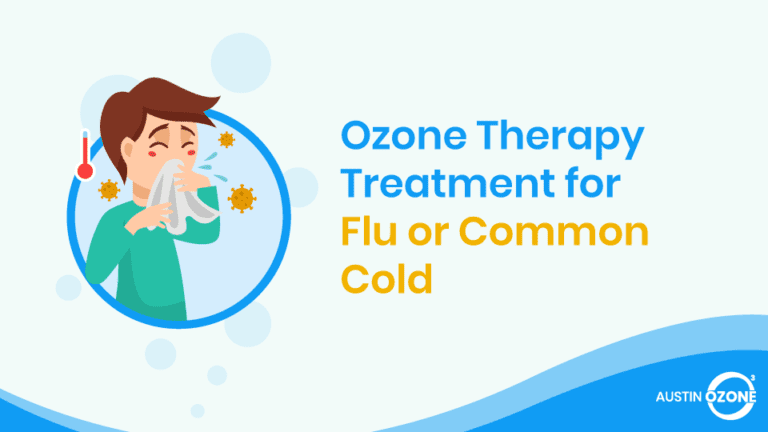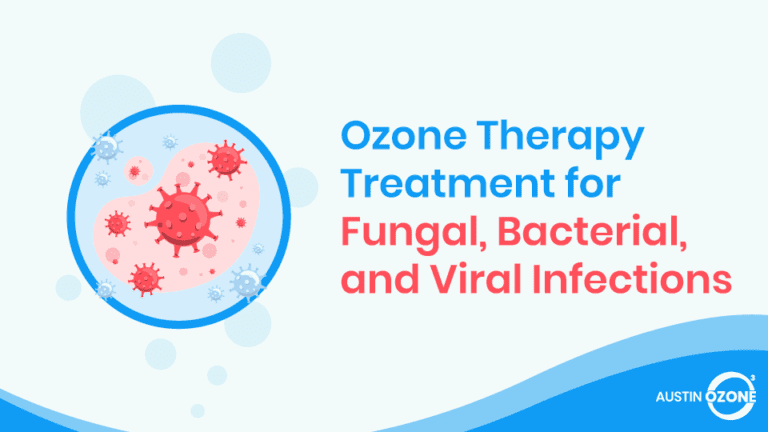Exposure to fungus is an unavoidable part of life. . While most fungi are not dangerous or lethal, some are really harmful to health.
When fungal infections occur in humans, they can take over that area of the body and are difficult to cure. This is because fungi can live and survive on almost all surfaces.
Its spread and impact on the human body has led to the quest to find more treatments, and ozone therapy is found to be one effective way.
Schedule an Ozone Therapy Session Today!
Overview of Fungal Infections and Candida
Millions of fungi species exist. They are so common in the environment that people can come in contact with or breathe in fungal spores without getting sick. Only a few hundred of the fungi species can infect people.
The effects of fungal infections vary. Some are not life-threatening. These infections can affect the nail, skin, and genitals (i.e., vaginal yeast infection).
However, some fungal infections can be quite serious. For example, coccidioidomycosis or Valley fever3 targets the lungs and the nervous system. According to the Centers for Disease Control and Prevention (CDC), about 5 to 10% of those infected with Valley fever develop long-term lung problems while around 1% suffer from problems in the brain and the spinal cord.
Fungal infections often spread in places that are not fully equipped in diagnosing and treating such diseases. This is why travelers need to take special precaution when visiting other places.
How Can You Get a Fungal Infection?
Fungi can live and survive everywhere, but especially in warm, moist environments. While most fungi do not cause problems, fungal infections develop when these microorganisms penetrate the skin and multiply.
They develop and proliferate in areas of the body that are usually damp and wet like the feet or the groin. Afterwards, a fungal infection can spread through direct contact of the skin or via surfaces like clothing or bedding.
For this reason, maintaining proper hygiene is the best way to avoid fungal infection. You can keep yourself and your environment clean and avoid sharing personal items—towels, nail clippers, or hair combs.
Are You at Risk of Getting a Fungal Infection?
The probability of acquiring a fungal infection depends on a number of factors. Some fungal diseases are more likely to spread in some areas more than others. For example, the risk of Valley fever is higher in the southwestern part of the United States. Moreover, activities such as gardening increase your chances of breathing in fungal spores, which can also lead to infection.
Fungal diseases can affect anyone, but those who are immunocompromised, such as those who have AIDS or cancer2 are more susceptible.
If you take medications such as corticosteroids, which can weaken your immune system, you are more likely to become infected. Also, as this is a global health problem, people living in places with limited resources are more at risk of fungal infections.
Common Fungal Infections
While most fungal infections are far from life-threatening, many of them can be both uncomfortable and annoying if left untreated.
Onychomycosis
Commonly known as fungal nail infection6, onychomycosis is characterized by nail cracking, breaking, and discoloration. It is usually caused by either yeast or mold, which might have entered the nail or skin through a small crack or gap.
While anyone can get onychomycosis, people who are suffering from a nail injury are more likely to become infected. The best way to avoid it is to practice good hygiene. Keeping your nails short, clean, and dry is one way of avoiding infection.
Onychomycosis is difficult to cure. Most doctors recommend taking antifungal pills to treat fungal nail infections. There are also some home remedies you can try.
Tinea or Dermatophytosis
Tinea is characterized by a circular rash that is red and itchy. Because of its shape, tinea is more often called by its common name, ‘ringworm’. It is a common fungal infection that can live on skin surfaces and other items like clothing or bedding.
The many types of ringworm depend on the affected location. Ringworm on the feet is called athlete’s foot, those found on the groin are called jock itch, and that on the scalp is called tinea capitis. Treatment also varies depending on the infected area.
Ringworm can spread after contact with an infected person or animal. This is why people should not share personal items like towels or combs. Also, petting kittens and puppies can increase your chances of becoming infected.
Candidiasis
This fungal infection is caused by the yeast, Candida1. It is most commonly found on the skin and on those areas with a mucous membrane (mouth, throat, gut, vagina, and penis). Although it normally does not cause problems, a serious infection can develop if the yeast enters your bloodstream or internal organs.
Candidiasis can be described in different ways, depending on the body part it affects. In the mouth and throat, it is commonly characterized by white patches, cracking and redness, pain, and loss of taste. In the vagina, candidiasis is exhibited by itching, soreness, abnormal discharge, and pain during sexual intercourse or when urinating.
For the most part, candidiasis can be treated by taking antifungal medicine. This can either be applied directly onto the affected area with an ointment or taken orally in the form of a pill.
Ozone as Fungicide
Ozone, an allotropic form of oxygen, is heavily utilized for its biological effects in the medical field. It is well established that exposing organic molecules like fungi to ozone can effectively oxidize, hydrolyze, or thermally decompose the said molecule.
For this reason, ozone can be used to inactivate many species of fungi, especially the ones causing infections in humans. Just like many medications, the dosage of the medical ozone administered is highly important; very low dosages will have no therapeutic effect, yet high dosage concentrations of ozone can have some toxic consequences in the body.
When administered correctly, medical ozone can inhibit and destroy some fungi species like Candida, Histoplasma, Aspergillus, Cryptococcus, and Actinomycoses. Their cell walls are made of carbohydrates, proteins, and glycoproteins. This makes them a good site for oxidative inactivation, thus disrupting the cellular organelles.
Ozone Therapy as Treatment for Candidiasis
Over the past decades, there is a rising incidence4 of candidiasis all over the world. It has been a frequent source of pain and discomfort for those infected.
Candidiasis is usually managed by using topical treatments, followed by a cocktail of systemic antifungal drugs. However, Candida can be resistant to many of them.
Ozone is a gas molecule that has been extensively researched for its antimicrobial, antibacterial, and antifungal properties. Recent clinical treatments7 show that ozone is effective in treating candidiasis.
Freshly produced ozone can suppress the reproduction and reduce the number of colonies of the Candida strain. The dosage and the length of exposure to medical ozone depends on the Candida strain and the location of the affected area.
Ozone is a gas molecule that has been extensively researched for its antimicrobial, antibacterial, and antifungal properties. Recent clinical treatments show that ozone is effective in treating candidiasis.
There are many ways to administer ozone therapy. The most popular procedure is Major autohemotherapy (MAH) where a blood sample is ozonated and intravenously infused back to the body. Other people opt to get ozone injections directly to the specific organs.
Another way is insufflation where medical ozone is pumped through a body crevice. Many individuals can do it at home with all of the needed tools. Perhaps the easiest form of ozone therapy is the oral intake of ozonated oil or water.
Whatever method you choose, just make sure to never inhale ozone by mistake since it could be harmful to the lungs.
Summary
Fungi is virtually everywhere. While not every fungus can cause health problems, those that do usually develop into an infection that can be difficult to cure. Fungal infections can also spread rapidly if not diagnosed and treated.
There are many ways for a person to get a fungal infection. However, the most common and obvious way of becoming infected is through poor hygiene, such as failure to sanitize surfaces that often come in contact with the skin, or through borrowing of personal items such as nail trimmers or combs.
If you are considering getting ozone therapy, be sure to first consult with your healthcare provider to know the type of ozone therapy that suits your condition.
Even though antifungal medications are widely available on the market, some fungi species are resistant to them. As such, it is worth considering ozone therapy as a treatment for fungal infections.
If you are considering getting ozone therapy, be sure to first consult with your healthcare provider to know the type of ozone therapy that suits your condition.
Schedule an Appointment Today
References
- AHC Therapies. (n.d.). Candida/yeast therapy. Retrieved from https://www.ahctherapies.com/candida-therapy/
- Amin, L. (2018). Biological assessment of ozone therapy on experimental oral candidiasis in immunosuppressed rats. Biochemistry and Biophysics Reports, 15, 57-60. doi: 10.1016/j.bbrep.2018.06.007
- Centers for Disease Control and Prevention. (2020, April 9). Valley fever. Retrieved from https://www.cdc.gov/fungal/diseases/coccidioidomycosis/symptoms.html
- Khatri, I., Moger, G., & Kumar, N. A. (2015). Evaluation of effect of topical ozone therapy on salivary Candidal carriage in oral candidiasis. Indian Journal of Dental Research, 26(2), 158-162. doi: 10.4103/0970-9290.159146
- Mu, G., Liu, H., Chen, M., Liu, X., & Ou, C. (2020). Ozone treatment unveils the veil of candida parapsilosis infection in the knee joint: A case report and literature review. Mycopathologia, 185(3), 545-554. doi: 10.1007/s11046-020-00447-8
- Parashar, B., Yadav, V., Maurya, B. & Sharma, L. (2012). Natural Therapy of fungal nail disease: Review. The Pharma Innovation, 1(4), 31-42. ISSN 2277-7695
- Pyper, L. (2016, February 15). Ozone therapy and candida. Retrieved from https://salvagente.co.za/ozone-saunas/ozone-therapy-and-candida/
- Zargaran, M., Fatahinia, M., & Mahmoudabadi, A. Z. (2017). The efficacy of gaseous ozone against different forms of Candida albicans. Current Medical Mycology, 3(2), 26-32. doi: 10.29252/cmm.3.2.26






